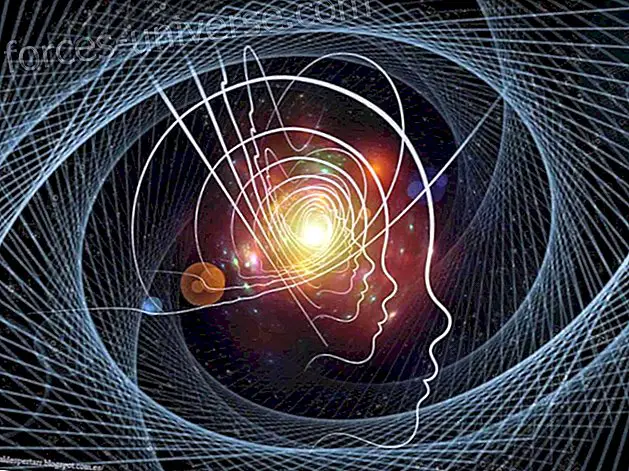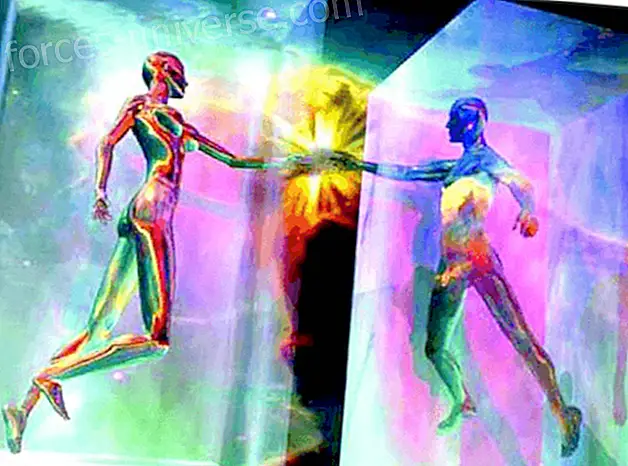The word shaman comes from the Altaic language (Siberian tungus) and is currently also used by lay people and lovers of wisdom to refer to both the practitioner and their practices. In each culture, due to the set of beliefs that they possess and ideologies that prevail in it, it is the vision they will have about the word shaman. Paraphrasing Serge Kahili King, not every healer is a shaman, but every shaman can be a healer (this principle applies in many cases).
Serge Kahili King defines the word shaman as “ a relationship healer: those that exist between body and mind, between people. Between these and their circumstances, between human beings and Nature, and between matter and spirit. ”
Then shamanism is a particular way of healing and the characteristic of these is its active initiative to carry out creative activities, so a shaman is a co-creator, not a mere passive observer . Shamanism is a trade and not a religion, and can be practiced alone or in a group.
This healing is such that when a shaman heals another, at that same time he is healing himself, so by helping to transform another, he transforms himself .

The ways of a Shaman
Shamans, depending on their tradition, can follow two paths: the path of the warrior or the path of the adventurer, according to the teachings of Serge Kahili King.
The warrior's path is based on the inner search or rather the development of power, control and fighting techniques that are essential to face them. This shaman usually embodies fear, disease or lack of harmony. It is usually a very lonely path.
The way of the adventurer on the other hand, is an itinerary driven by the desire to develop love, harmony, cooperation. These shamans usually depersonalize the characteristics present in a warrior shaman. This path has the characteristic of being very social .
An example given by Serge Kahili King to differentiate a shaman from the other is that if a person asks for help to be able to relate to another individual who is emotionally disturbed, the warrior shaman will teach the person who came to his aid to create a psychic shield to help him and protect him from this person, that is, from his negative energy. However, the adventurous shaman will teach you to harmonize, to harmonize your energy so that you can enter a state of deep calm which can be transformed into a healing source for the other .
Serge Kahili King refers to Hawaiian shamanism which is characterized by following the adventurer's tradition . The Hawaiian word refers to a particular form of shamanism to which Kahili King adheres. This form of shamanism is a practice that can be applied at any time of the day, whether during the workday, in one's home, at school, in the garden, in the collective, etc. This is because Hawaiian shamans worked primitively with soul and mind . In other words, they did not resort to musical instruments to incite certain altered states of consciousness or use masks to personify other forms or characteristics. This is why it is not necessary to build a certain space to incite certain states of consciousness.

Creating harmony in our body
From this Hawaiian perspective, health is a state of peace, of harmony, so disease is the opposite, it is the end of harmony and the beginning of a conflict or war . Starting from these concepts, the shaman does not try to end the battle but seeks to create harmony .
From this approach, all diseases refer Serge Kahili King, " generated by themselves as a result of stress ." The location of this stress is not relevant, it is only the place where it is housed. Healing has to do with an energy boost, which releases tension, in other words it releases stress.
If almost everything now generates stress, what can we do?
As we know practically everything is a generator of stress, both external matters and those of the internal world, emotions, thoughts, sensations etc. This stress is natural and indispensable in every living being. However, if this stress becomes constant, systemic and uninterrupted, we have to pay close attention. According to the teachings of Serge Kahili King, life is a natural and continuous cycle of "stress-tension-release-relaxation-stress " and so on. The unnatural flow is therefore reduced to "stress-tension-stress". If we look closely we can see that in this cycle the possible release and consequent physiological relaxation has disappeared. When the normal cycle is altered, and two essential functions are repressed, the tension begins to accumulate .
Body consequences of stress
- In the blood more sugar is released than necessary, so this is starting to break the body harmony . We can do some physical exercises to counteract the excess blood sugar.
- The gland responsible for the functioning of the immune system contracts . Its harmonic function is to generate white blood cells, but being constantly contracted the usual production is inhibited and the feeling of anxiety grows. One way to help relax our thymus, the gland in question, is by tapping gently with the fingers in the center of the chest.
- Muscles tense, which are indispensable for us to act assertively. So it is necessary for those to relax. One way of doing this is by means of energetic massages and performing appropriate stretching to each muscle group.
- The cells release toxins in greater quantity than usual, and added to this, due to the stress situation, this elimination capacity (by breathing, perspiration) is inhibited, causing these toxins to accumulate and contaminate the other cells generating effects unwanted side A well known and simple technique to reverse this is deep breathing to eliminate such toxins.

The origin of stress according to Hawaiian shamanism
The etiology of stress, according to this perspective, is related to resistance. The term Resistance refers to the vital force, the friction that makes us move, the constancy of maintaining habits and certain patterns in memory.
There are four types of resistance, according to the teachings of Serge Kahili King:
1) Physical Resistance : it is the one that happens naturally when we receive some kind of sharp, hot or aversive stimulus . When the magnitude of the stimulus exceeds the tolerance threshold, it is when the resistance generates the amount of tension necessary to cause decompensation in the body.
Shamanic Technique: Recreate the Patterns
This technique consists of recreating the pattern, for example if I hit my hand with the tip of the table, instead of complaining, I approach the table and repeat the sequence of bringing my hand to the tip of the table (as if I hit her again) but I change the end. I don't get to hit it, I just do the movement and change pattern as it ends, instead of hitting me, I dodge the edge of the table. I do this several times and the pain dissipates. It sounds absurd but there is a lot of evidence that this happens.
According to Serge Kahili King when recreating the pattern and modifying the end, one changes the body memory so that the pain disappears. The faster this technique is applied after a physical stimulus has affected us, the less it takes the body to regain its harmony and lessen the pain.
2) Emotional Resistance :
Its origin dates back to fear and anger . People tend to resist what we fear, and this enrages us. That is, we all have a natural fear which is the primitive emotion par excellence that warns us of danger and makes us act . Once we act, that natural fear disappears, simply by acting. Now, human beings also have a very creative mind, so most of the time we generate unnatural fears, after certain facts. For example, we watched as a man assaulted a woman. At the time we were scared and then that emotion disappeared. And if our imagination acted, then we may begin to think and feel that any man who approaches the street could be that man and assault us. It is there when we are creating an unnatural fear. And as the phrase what it resists replicates , it persists, that is, the more we resist certain situations, the more we rekindle through memory a distressing situation, the more tension we will generate, so that this recurring thought now becomes an unnatural fear . The sustained anger, generates that we get angry with everything that is and is an essential factor for the creation of ailments.
Cham nica Technique: The effect of expectation:
Serge Kahili King reminds us that fear is the expectation of pain, that is, it is the result of projecting in the future a situation originating in the present or past and imagining it as a painful experience. Fear is always accompanied by tension and never relaxation, so if we relax, fear will succumb. In this way, the fastest way to make fear disappear is to focus attention on its opposite : that is, pleasure, since this is the opposite of pain. The technique is to think and imagine the next question What will happen if something terrible happens in the next 10 minutes? Now experience all the sensations that arise in your body, return it. Then and after experiencing it completely, answer the following question: What will happen if instead, something wonderful happens? and re-register all your feelings. There they will realize what painful expectations produce and what pleasant expectations generate in the body . In conclusion, although we are facing a situation in which we are certain that it will be painful, we can try to shift our attention to a pleasant and real or imaginary expectation. In this way, fear will be sidelined and tension will be also.
Another technical technique for this type of resistance is the Mantle of Forgiveness :
One of the effects of stress that we want to modify is unnatural anger. The latter is the result of unnatural norms. These unnatural norms are the rules or beliefs we have about how things should be, how people should behave and even rules about how we should be. There are rules that are natural and essential of every society to make changes and that there is an evolution at all levels. But also, there are unnatural norms like women should behave in such a way, and men in such a different way, or people like me should do such a thing and not another, but they are useless people and deserve punishment for their inappropriate behavior ”, etc. This generates anger and stress, because not everyone is going to behave as we want . Some prefer to set aside this "should" but it works to some extent. However, a method that never fails is the mantle of forgiveness . As Serge Kahili King states, "forgiving is basically the process of deciding that what happened is no longer important or does not concern us." Once you apply the mantle of forgiveness, you have to put your fingers in the area of the body where you feel the pain or discomfort (typical of the state of pain which is always provided with anger) and say “Whatever the reason for this pain, I totally forgive it and it doesn't worry me anymore ”. In this way, the tension will decrease, and in case it does not happen it is advisable to repeat it several times. It is convenient to practice it for a minute, anywhere, anytime.

3) Mental Resistance:
When we resist something, we will always generate stress, whether consciously or unconsciously. This type of resistance differs from the emotional one, since the first one arises when you think something is wrong, and the second one is born when you think something is bad . (One analyzes, the other evaluates / judges). This mental resistance is the best version of negative criticism, and each criticism generates negative stress. People who tend to remember their mistakes systematically, undoubtedly repeat them again.
Technique: The tornado.
The word tornado symbolizes the possibility of turning the pattern of criticism . How? First recognize the positive aspect of an event, and then make the criticism . Example "Your furniture is beautiful but it obscures the environment a lot." In this way, to achieve a beneficial effect, the comment is reversed, as follows: "I think the furniture obscures your environment, but they are beautiful." The change aims at the comment ending with a compliment, because the compliment neutralizes criticism.
4) Spiritual Resistance:
This type of spiritual resistance can arise from the 3 types of tension mentioned above. It can also be the result of an alienation . This type of tension implies moving away from people, a group or something, because we don't feel part of them. That is, we feel rejected, belittled, etc. The greater our alienation to these beliefs, the greater the stress it will produce.
REDACTORA: Gisela S., editor of the great family of the White Brotherhood.
SOURCE: Kahili King, S. (2007). The urban shaman. Deva´s.






